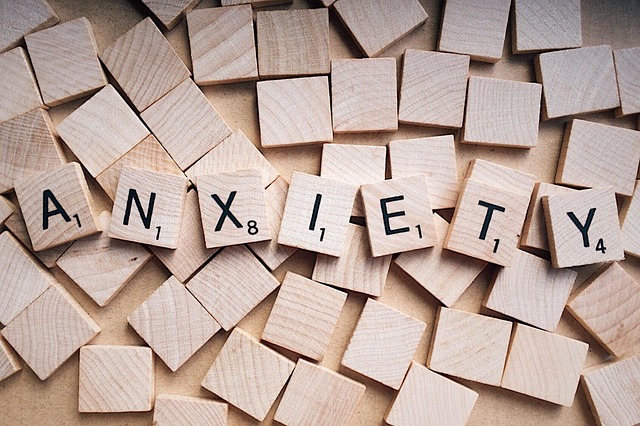Targeting young adults (18-35) with tailored mental wellness content is crucial, addressing unique stressors like education, careers, and social expectations that contribute to anxiety, depression, and isolation. Integrating American Sign Language (ASL) in podcasts enhances accessibility for deaf or hard-of-hearing young adults, providing therapy options catering to their specific needs, including stress management, conflict resolution, and personal growth through inclusive communication. In today's digital age, this approach meets the heightened mental health concerns of young adults, fostering empathy and support.
“Unleash the potential of mental wellness podcasts tailored for young adults—a demographic with unique mental health challenges. This series delves into their struggles and offers support through innovative content creation, incorporating American Sign Language (ASL) to cater to deaf and hard-of-hearing listeners.
From identifying target audiences to producing high-quality episodes, we explore effective strategies. Learn about engaging formats, from structured segments to interactive elements, ensuring accessibility through transcripts and captioning. Empower young adults with the therapy they need, making mental wellness conversations inclusive for all.”
- Identifying Target Audience: Young Adults and Their Mental Health Needs
- – Understanding the demographic: Young adults and their unique mental wellness challenges
- – Researching and analyzing current trends in mental health among this age group
- Unleashing the Power of American Sign Language (ASL) in Podcasting
Identifying Target Audience: Young Adults and Their Mental Health Needs

Identifying the target audience is a crucial step in producing a successful mental wellness podcast series. Young adults, aged 18 to 35, are a demographic with distinct mental health needs and challenges. In today’s fast-paced world, this age group often faces unique stressors related to education, careers, relationships, and social expectations. Many young adults struggle with anxiety, depression, and feelings of isolation, which can be exacerbated by the constant exposure to social media and digital connectivity.
By focusing on this target audience, podcast creators can offer tailored content that resonates with their experiences. Topics such as burnout prevention, conflict resolution techniques, and emotional well-being promotion techniques can be particularly relevant. Furthermore, incorporating American Sign Language (ASL) in certain episodes can enhance accessibility and cater to the needs of deaf or hard-of-hearing young adults, ensuring an inclusive environment for all listeners.
– Understanding the demographic: Young adults and their unique mental wellness challenges

Young adults, aged 18-35, face unique mental wellness challenges distinct from those experienced by older demographics. This age group is often navigating critical life transitions—such as leaving home, starting careers, and managing student loans—which can lead to heightened stress levels and anxiety. Additionally, social media consumption patterns and the pressure to succeed in an increasingly competitive job market contribute to a heightened sense of isolation and feelings of inadequacy.
Understanding these dynamics is crucial for developing tailored mental wellness coaching programs. Incorporating strategies like stress management techniques and risk management planning can empower young adults with tools to cope effectively. Even specialized services like therapy for young adults delivered in American Sign Language (ASL) cater to the diverse needs of this demographic, ensuring accessibility and cultural sensitivity.
– Researching and analyzing current trends in mental health among this age group

In today’s digital era, understanding the mental wellness landscape among young adults is more crucial than ever. Researching and analyzing current trends reveals a growing need for tailored support in this age group. According to recent studies, many young adults are grappling with unique challenges such as heightened stress levels, social anxiety, and identity crises, often exacerbated by the fast-paced nature of modern life and increased exposure to online pressures. This has led to a surge in demand for innovative approaches to mental health care, including accessible therapy options specifically designed for this demographic.
One notable trend is the integration of American Sign Language (ASL) in therapy sessions for young adults who are deaf or hard of hearing. This inclusive practice not only caters to a specific community but also offers a non-verbal space for individuals to express their emotions and experiences, enhancing empathy building strategies and conflict resolution techniques. Furthermore, stress reduction methods adapted from mindfulness practices have gained popularity as effective tools for managing the mental health concerns prevalent among this age group.
Unleashing the Power of American Sign Language (ASL) in Podcasting

Incorporating American Sign Language (ASL) into podcasting offers a unique and powerful approach to mental wellness content, particularly for young adults in need of therapy. By using ASL, podcasts can engage a deaf or hard-of-hearing audience, providing essential emotional healing processes and anxiety relief that may be lacking in traditional spoken word formats. This inclusive strategy not only broadens the reach of mental health resources but also enhances accessibility, ensuring that critical conversations about social skills training and personal growth are accessible to all.
By integrating ASL into podcast episodes, creators can facilitate more dynamic and expressive communication, capturing intricate nuances of emotional healing processes. This visual language allows for a deeper connection with listeners, fostering an environment conducive to learning and support. It empowers young adults to engage in conversations about their mental health using a natural and intuitive means of expression, potentially leading to improved coping mechanisms and enhanced overall wellness.
In conclusion, producing a mental wellness podcast series tailored to young adults’ specific needs, such as integrating Therapy for Young Adults and the unique communication power of American Sign Language (ASL), offers a compelling approach to reaching and supporting this demographic. By understanding their challenges and leveraging accessible media, we can create impactful content that fosters open conversations about mental health. This innovative use of ASL in podcasting expands inclusivity, ensuring that vital messages reach a broader audience within the vibrant community of young adults navigating their mental wellness journeys.








